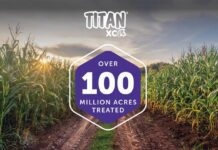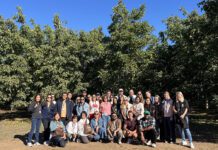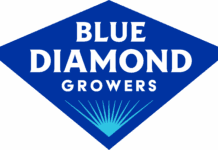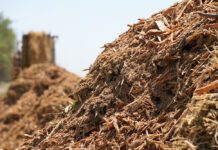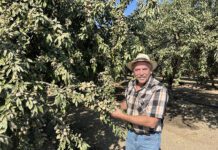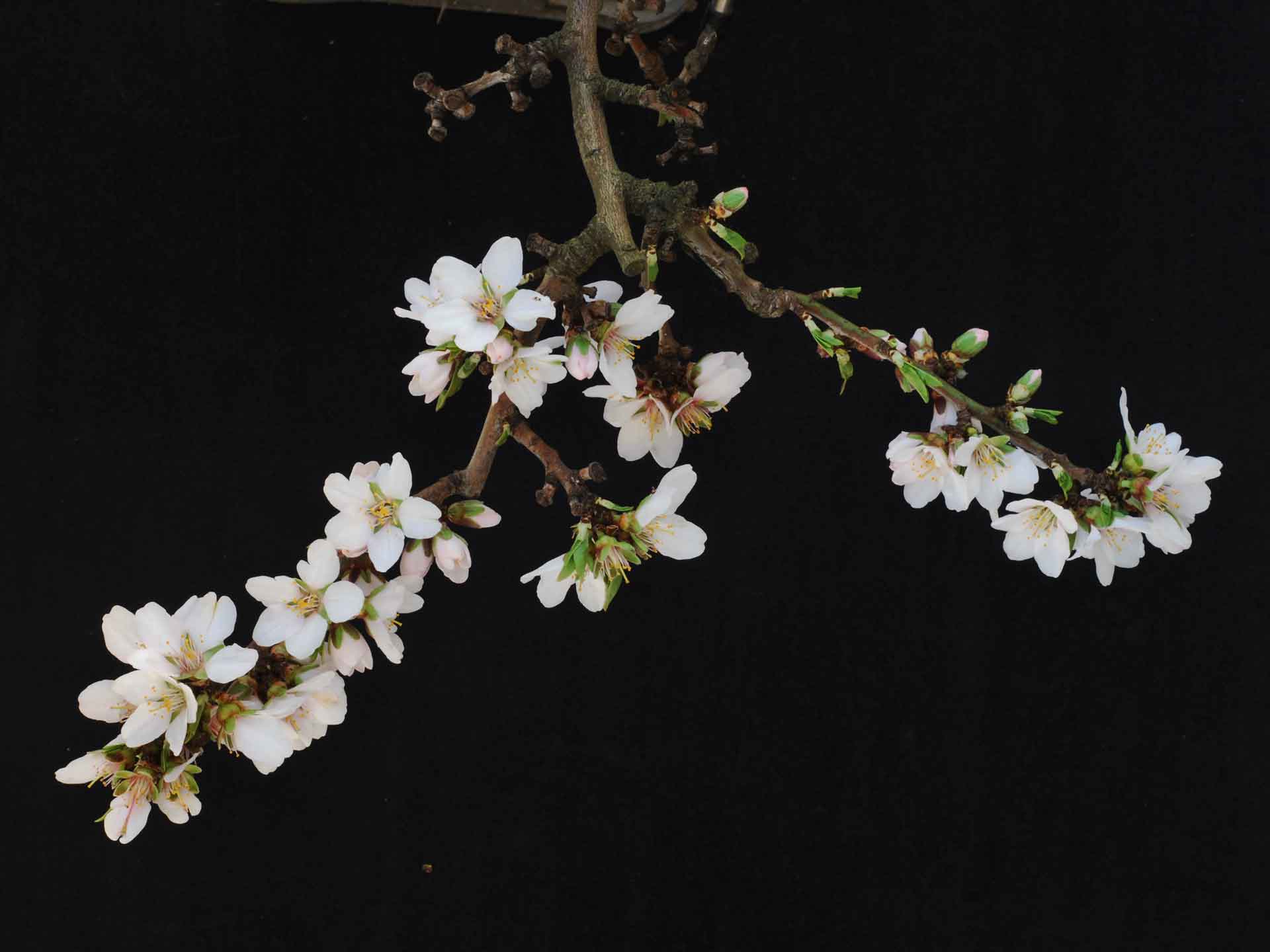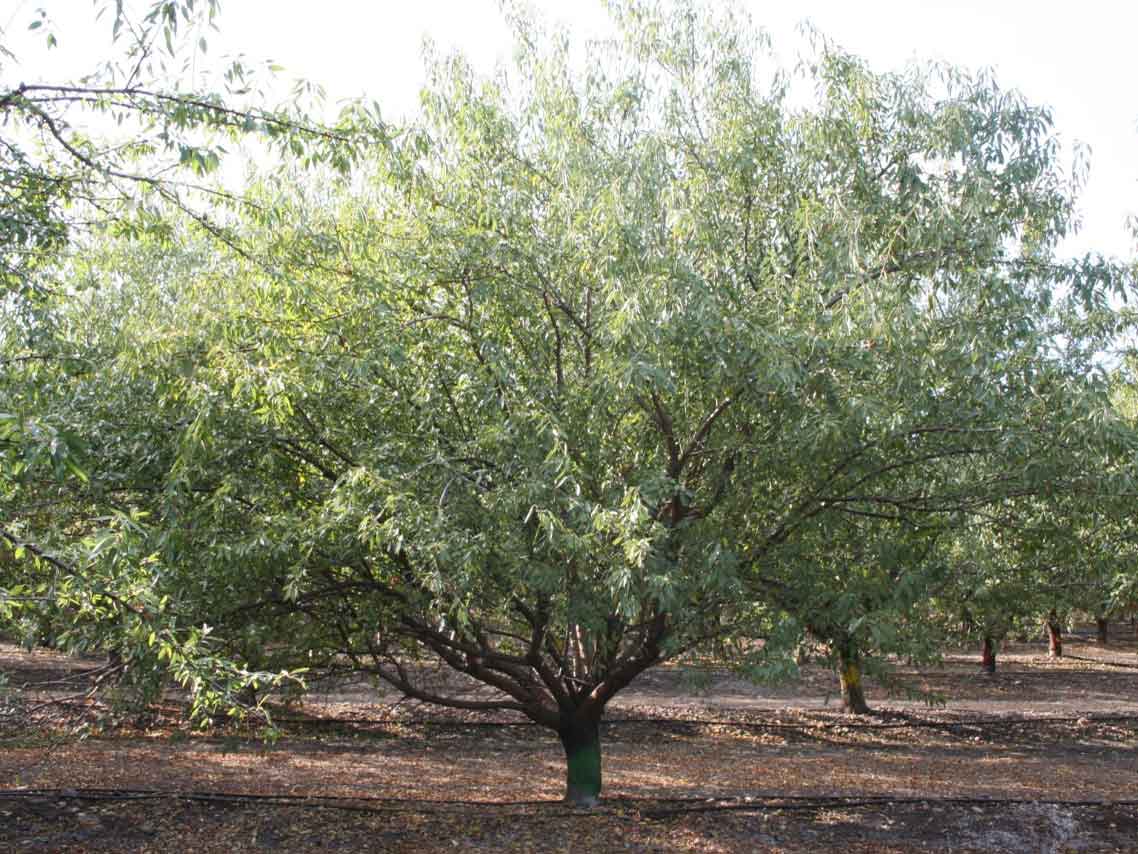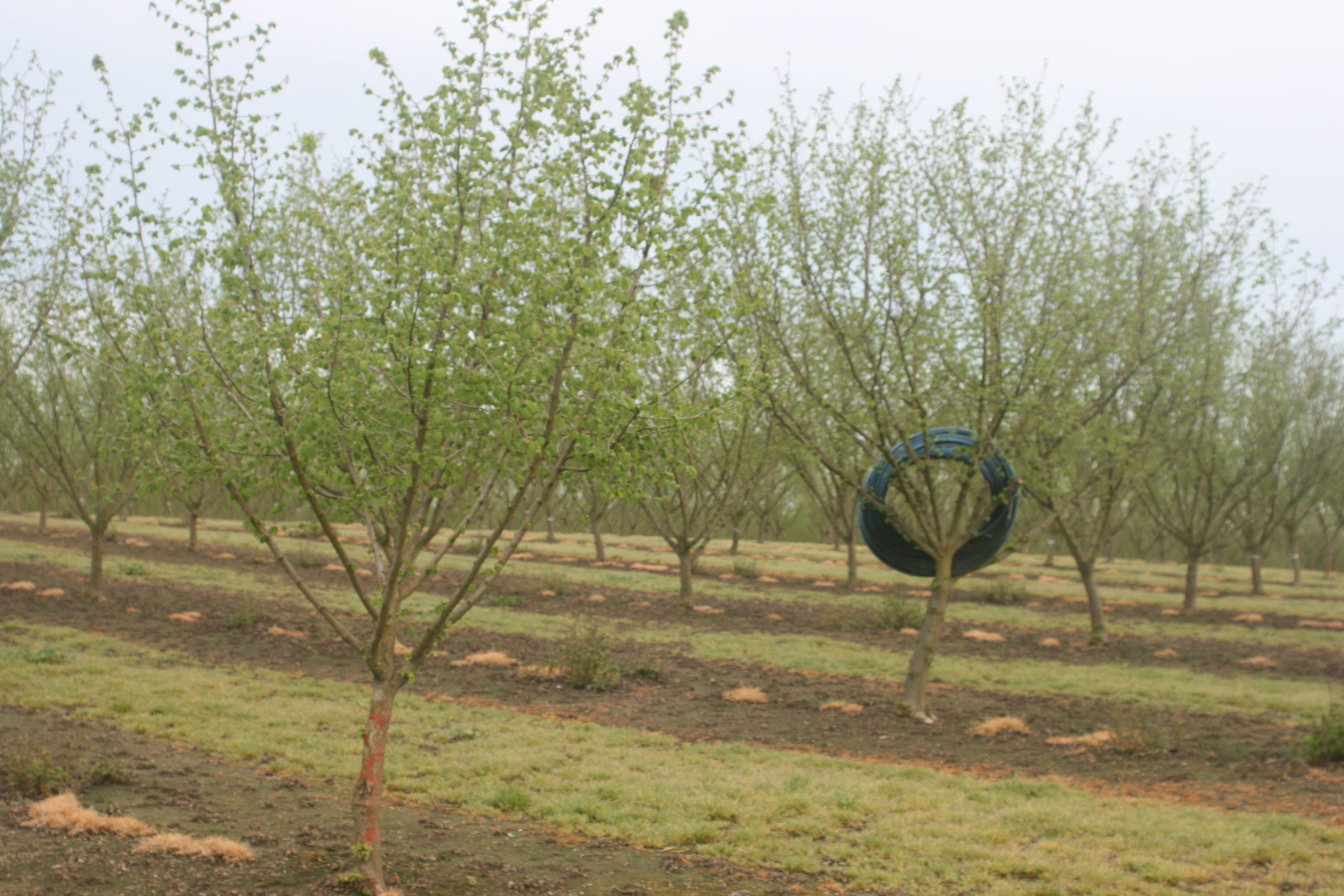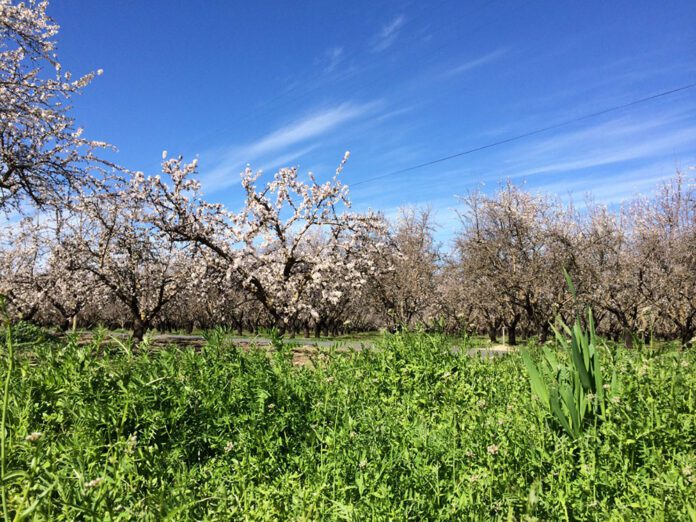
With every new year comes the realization that almond orchards will be in full bloom before long. This article summarizes some considerations for the 2025 almond pollination season, including a discussion on how to cut pollination expenses this year while maintaining in compliance with requirements for federal crop insurance.
Almond Industry Update
Many almond growers are feeling the stress of narrowing profit margins over the last few years. For context, the USDA National Agricultural Statistics Service (NASS) 2019-2023 average almond price was $1.81 per pound, far lower than the previous five-year average (2014-18) of $3.05 per pound. While almond prices have remained relatively low the last few years, input prices have increased substantially. Table 1 displays summarized values of operating costs of production from two 2024 Almond Costs and Returns Studies produced by UC Davis. Comparing these studies with previous studies completed in 2019, gross returns decreased by 36% between 2019 and 2024, while operating costs increased by 38% to 40%. This led net returns above operating costs to decrease by over 100%. The current state of almond profit margins has led to increasing rates of orchard removal and abandonment and lower planting rates over the last few years.
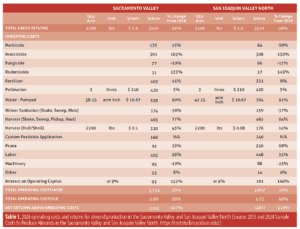
The Almond Board of California and Land IQ estimate the removal of around 66,794 acres of almonds by September 2024, approximately 5% of the 1.4 million bearing acres in 2024. This is down from 2023 when an estimated 82,958 acres where removed. Typically, almond orchards are thought to last 25 to 30 years after planting. Older orchards are the most likely candidates for removal or abandonment; however, many have speculated the additional removal or abandonment of younger orchards in the past couple of years due to water scarcity concerns and low profit margins. Table 2 shows the percentage of removals by orchard age for 2020 through 2024. It shows that over this period, a growing proportion of removals were relatively young orchards. In 2020, 15% of acreage removed was younger than 20 years, but this grew to 53% and 45% in years 2023 and 2024, respectively.
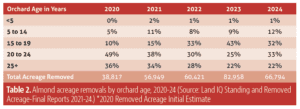
Figure 1 shows a comparison of the acres planted and removed from 2020 to 2024. In 2020 and 2021, planted almond acreage exceeded the removed acreage, leading to a net increase in total almond acreage, a trend that has been considered the norm for nearly three decades. However, beginning in 2022, the amount of removed acreage surpassed planted acreage, leading to a net decrease in total almond acreage. This suggests that almond acreage will plateau around 1.4 million bearing acres, and if this trend continues, we may see bearing acres begin to decrease in the coming years. Despite the net decrease of total almond acreage over the last three years, roughly 1.4 million bearing acres of almonds remain going into 2025.
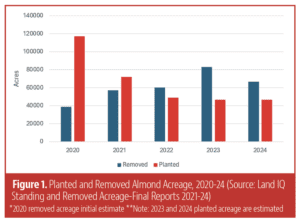
*2020 removed acreage initial estimate **Note: 2023 and 2024 planted acreage are estimated
Estimated Colony Demand
Figure 2 plots the estimated demand for colonies based on bearing almond acreage each year from 2020 to 2025 as well as the total number of colonies in the U.S. on January 1. Estimated demand is calculated using two colonies per acre for traditional varieties and one colony per acre for self-fertile varieties (Shasta and Independence). For the 2024 almond bloom, roughly 1.4 million almond acres (7.1% in self-fertile varieties) required an estimated 2.7 million honeybee colonies for pollination (Fig. 2).
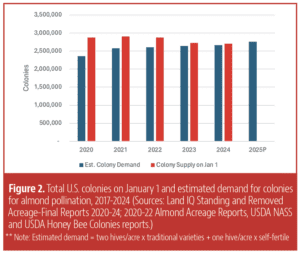
** Note: Estimated demand = two hives/acre x traditional varieties + one hive/acre x self-fertile
As seen in Figure 2, the estimated demand for colonies in 2025 is 2.8 million colonies, roughly 3.5% higher than the 2.7 million required in 2024. However, given the higher rates of removals of almond acreage in recent years and the timing of USDA reporting, this 2.8 million could be a slight overestimate. In recent years, self-fertile variety plantings as well as orchard removals have started leveling off the estimated demand for colonies. However, the estimated number of colonies that will be required for almond pollination in 2025 exceeds the 2.7 million colonies in the U.S. on Jan. 1, 2024, so at least in the short run, it’s unlikely this leveling off of demand will put downward pressure on pollination fees. In fact, pollination fees may need to rise to incentivize beekeepers to expand colony numbers.
Colony Supply Issues
The primary influence on the supply of available colonies for almond pollination is colony health and populations throughout the U.S. Colony health issues can impact both the strength of colonies and the total number of colonies that survive the winter. Researchers who conducted the U.S. Beekeeping Survey reported the 2023-24 winter mortality rate for commercial beekeepers was 37.6%. Notably, this was the first time since the beginning of this survey (formerly conducted by the Bee Informed Partnership) that commercial beekeepers had higher loss rates than backyard beekeepers. This suggests continuing issues with colony health, and commercial operations may be struggling even more than they have in the past. This loss rate is noticeable in Figure 2 where for 2024 almond pollination, the demand for colonies was almost equivalent to the supply on Jan. 1, 2024.
Weather during the summer months can have an impact on honey production, as well as bee health, due to the availability of nutritious forage. Figure 3 shows the U.S. drought monitor as of July 30, 2024 displaying drought conditions in some parts of the U.S.; however, the major honey powerhouse states of North Dakota, South Dakota and California seem to be mostly in the clear. There are parts of Texas that had some severe drought conditions, so there is potential that some Texas beekeepers with colonies in those areas may suffer higher winter mortality rates and lower colony strength of surviving colonies in addition to higher costs of feeding.
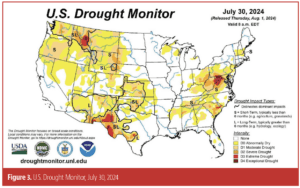
Two major hurricanes made landfall at the end of September and early October 2024 that may cause concerns for colony supplies, Hurricanes Milton and Helene. Both hurricanes hit Florida, and Hurricane Helen also hit Georgia and other parts of the Southeast. According to the USDA Honey Bee Colonies Report, about 432,000 colonies (15% of the total population) were located in Florida and Georgia on Oct. 1, 2023. If any colonies were located near the paths of these major hurricanes, they could have been destroyed, stressed or experienced nutritional deficiencies due the hurricanes stripping floral resources.
Almond Pollination Fees
Table 3 shows the distribution of fees reported by colony strength requirement from the California State Beekeeper’s 2024 Pollination Fee Survey. The average fee for the 2024 almond pollination season for the most common colony strength requirement (seven to nine frames) was $196 per colony, though this ranged from $100 to $220 per colony. Smaller colony strength requirements of four to six frames received an average of $188 per colony, while higher colony strength requirements of 10 to 12 frames averaged $208 per colony.
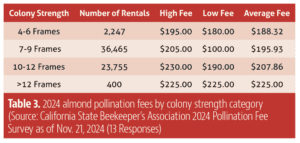
Hive Density, Colony Strength and Crop Insurance Requirements
In 2025, growers may be looking to cut expenses this year due to low almond prices. Most almond acreage is insured through USDA Risk Management Agency (RMA) and the Federal Crop Insurance Corporation (FCIC). To collect indemnities when a yield loss occurs, growers must make sure they are adhering to the requirements of crop insurance. Failure to use an adequate number of bee colonies and/or frames per colony is not an insurable cause of loss and will often be the first practice verified when a grower makes a claim. Thus, I wanted to touch on how to go about cutting pollination costs in the right way so that crop insurance requirements are met.
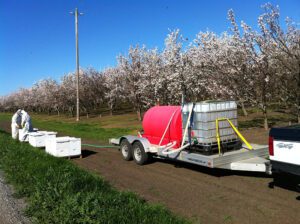
USDA and FCIC allow for substitution between colony strength and hives per acre in their almond crop insurance policy. The current policy document (Almond Loss Adjustment Standards Handbook 2023 and Succeeding Crop Years) states as a guideline that a producer should have at minimum two colonies with six active frames, or its equivalent. Technically, that means one 12-frame colony per acre or 1.5 eight-frame colonies per acre would satisfy this requirement. Almond growers can even deviate from this standard as long as they have consistently been using the same number of hives per acre and colony strength requirements and have had consecutive non-loss years. This flexibility in the policy allows growers to capitalize on benefits from self-fertile varieties that require fewer colonies per acre.
I expect a large portion of growers in the past have been using the standard two hives per acre at an eight-frame average. Table 4 displays a few combinations of hive density and colony strength that satisfy two conditions: 1) They meet the minimum standard defined by crop insurance (12 frames per acre) and 2) they result in cost savings compared to renting two hives per acre at an eight-frame average. The pollination fees per hive are my estimates based on those reported in Table 3.
Table 4 shows there is flexibility when it comes to pollination expenses. Even using the lowest colony strength category (four frames) at three hives per acre can lead to cost savings at the right pollination fee per hive. The key to accessing this flexibility will be working directly with your pollination provider. If your beekeeper has already spent a substantial amount of time and inputs to provide high-strength colonies, it may not be profitable for them to make an agreement with low colony strength and corresponding low fees, in which case reducing the hives per acre for a higher colony strength category may be the mutually beneficial solution.
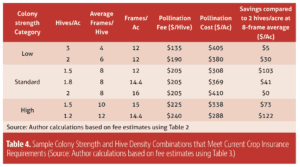
Other Pollination Contract Elements
There are other ways growers can work with their pollination provider to lower pollination expenses in return for lowering risk in some way or simply providing convenience. Growers can offer bee holding yards before bloom, reduce risk of colony theft by providing locked gates or other security measures in orchards, or improve the health of bees through planting bee-friendly cover crops or taking extra precautions to prevent pesticide exposure. For example, Table 5 shows results from a study where we estimated beekeepers’ valuation of various contract clauses. Beekeepers were willing to accept discounts from a $200/colony pollination fee for a grower providing 40% prepayment before February 1, additional pesticide protections and planting bee-friendly cover crops.
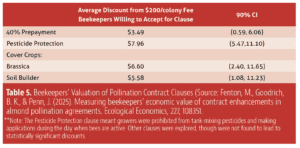
**Note: The Pesticide Protection clause meant growers were prohibited from tank-mixing pesticides and making applications during the day when bees are active. Other clauses were explored, though were not found to lead to statistically significant discounts.
Almond pollination services continue to require most of the total colonies in the U.S. Even when times are tight, make sure to communicate with your beekeeper and pollination broker, and maintain good relationships to ensure a secure supply of pollinators going forward.
I have written a number of these pollination outlook articles over the years and have archived them and other resources at brittneygoodrich.com/almond-pollination.html.
Scan the QR code with your smartphone camera to visit my website and access pollination outlook articles from years past.





